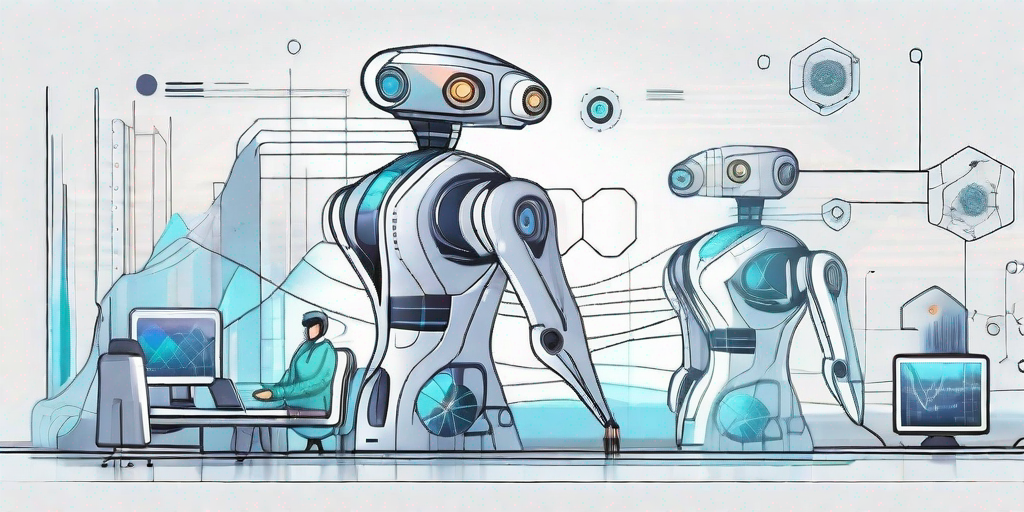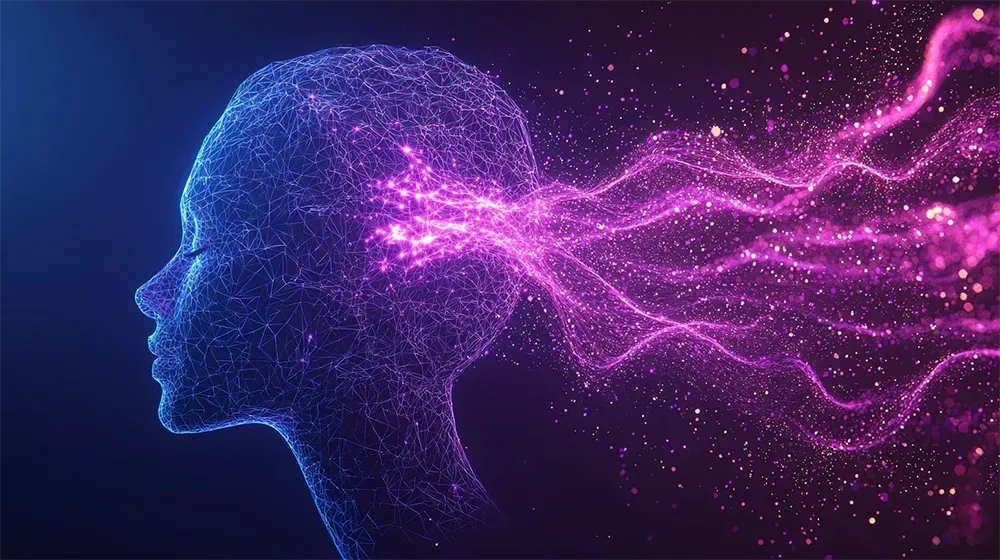An Innovation Futurist's Guide to Understanding Machine Learning

An Innovation Futurist's Guide to Understanding Machine Learning
Welcome to "An Innovation Futurist's Guide to Understanding Machine Learning." In this comprehensive article, we will demystify machine learning and explore its practical applications from the perspective of an innovation futurist. So, fasten your seatbelt, as we take a thrilling journey into the world of cutting-edge technology.
Demystifying Machine Learning: The Role of an Innovation Futurist
First things first, let's clear up any confusion surrounding machine learning. As an innovation futurist, my role is to explore the potentials of emerging technologies and how they can reshape our future. Machine learning, a subset of artificial intelligence, is at the forefront of this technological revolution.
Machine learning algorithms enable computers to learn from data and improve their performance over time, without being explicitly programmed. This remarkable capability opens up a world of possibilities, from self-driving cars to personalized recommendations.
Imagine a world where cars can navigate through busy city streets without human intervention. Self-driving cars, powered by machine learning algorithms, are becoming a reality. These algorithms analyze vast amounts of data from sensors, cameras, and GPS to make real-time decisions on how to navigate the roads. By continuously learning from their experiences, these cars become more efficient and safer with each journey.
But machine learning goes beyond just self-driving cars. It has the potential to revolutionize various industries. Take healthcare, for example. Machine learning algorithms can analyze medical records, genetic data, and clinical trials to identify patterns and make accurate predictions. This can lead to early detection of diseases, personalized treatment plans, and improved patient outcomes.
Personalized recommendations have become an integral part of our online experience. Whether it's suggesting movies on Netflix or products on Amazon, machine learning algorithms are behind these recommendations. By analyzing your browsing history, purchase behavior, and preferences, these algorithms can predict your interests and tailor recommendations specifically for you.
Machine learning also plays a crucial role in fraud detection and cybersecurity. By analyzing patterns in data, machine learning algorithms can identify suspicious activities and flag potential threats. This helps in preventing financial fraud, protecting sensitive information, and ensuring the security of online transactions.
As an innovation futurist, my role is to stay updated with the latest advancements in machine learning and explore how they can be applied to different industries. By understanding the capabilities and limitations of machine learning algorithms, I can help organizations harness the power of this technology and drive innovation.
In conclusion, machine learning is a game-changer. Its ability to learn from data and improve performance over time opens up a world of possibilities. From self-driving cars to personalized recommendations, machine learning is reshaping industries and transforming our future. As an innovation futurist, I am excited to be at the forefront of this technological revolution and explore the endless potentials of machine learning.
Understanding Machine Learning through an Innovation Futurist's Perspective
Now that we've established the basics, let's dive deeper into machine learning from an innovation futurist's perspective. To truly grasp the potential of this technology, we must explore its three key components: data, algorithms, and models.
Data is the fuel that drives machine learning. The more high-quality data we have, the better our models can learn and make accurate predictions. Clean, diverse, and abundant data is the backbone of any successful machine learning project.
When it comes to data, there are various sources that can be utilized. For instance, in the field of healthcare, electronic health records, medical imaging, and genomic data can provide valuable insights for developing predictive models. In the financial industry, transactional data, market data, and customer behavior data can be leveraged to build algorithms that can detect fraudulent activities or predict market trends.
Moreover, the quality of the data plays a crucial role in the accuracy of the models. Data cleaning techniques, such as removing outliers or handling missing values, are essential to ensure the reliability of the results. Additionally, having diverse data from different sources and demographics helps to avoid biases and ensures that the models are robust and applicable to a wide range of scenarios.
Algorithms are the building blocks of machine learning. These mathematical formulas analyze data, uncover patterns, and make predictions or decisions. As an innovation futurist, I constantly evaluate and develop new algorithms to push the boundaries of what is possible.
There is a wide range of algorithms available in machine learning, each with its own strengths and weaknesses. For example, decision trees are effective in handling categorical data and can be easily interpreted, while support vector machines are powerful in dealing with complex datasets. Deep learning algorithms, such as convolutional neural networks, have revolutionized image recognition and natural language processing tasks.
As an innovation futurist, I am always on the lookout for new algorithmic advancements. Exploring cutting-edge techniques like generative adversarial networks, reinforcement learning, and transfer learning enables me to stay at the forefront of machine learning innovation. By constantly pushing the boundaries, I strive to develop algorithms that can tackle complex problems and deliver accurate predictions.
Models are the products of machine learning. They are the end-results that allow us to make predictions, classify new data, or make decisions. Models can range from simple linear regressions to complex deep neural networks, depending on the problem at hand.
Once the data has been processed and the algorithms have been trained, the resulting models can be used for a variety of purposes. In the field of healthcare, models can be utilized to predict disease outcomes, recommend personalized treatment plans, or analyze medical images for early detection of abnormalities. In the financial sector, models can be employed to assess credit risk, detect fraudulent transactions, or optimize investment portfolios.
It is important to note that models are not static entities. They require continuous monitoring and updating to ensure their performance remains optimal. As new data becomes available or the problem domain evolves, models need to be retrained or fine-tuned to adapt to the changing circumstances. This iterative process of model refinement is essential to maintain accuracy and relevance in the ever-changing landscape of machine learning.
Predicting the Future with Machine Learning
As an innovation futurist, one of my primary focuses is to leverage machine learning to predict future trends and behaviors. By analyzing vast amounts of data from various sources, we can uncover hidden patterns and make informed predictions.
For example, imagine using machine learning to predict consumer preferences. By analyzing historical data on customer behavior, we can anticipate trends and tailor our offerings to meet their evolving needs. This enables businesses to stay ahead of the competition and create personalized experiences for their customers.
Furthermore, machine learning can also be applied to financial markets. By analyzing historical stock market data and incorporating real-time information, algorithms can identify patterns and predict future market movements. This can be invaluable for investors and traders who are looking to make informed decisions and maximize their returns.
In the field of healthcare, machine learning has the potential to revolutionize patient care. By analyzing vast amounts of medical data, including patient records, genetic information, and clinical trials, machine learning algorithms can identify patterns and predict disease outcomes. This can help doctors make more accurate diagnoses, develop personalized treatment plans, and ultimately improve patient outcomes.
Another area where machine learning can have a significant impact is in transportation and logistics. By analyzing data from sensors, GPS devices, and traffic patterns, machine learning algorithms can optimize routes, predict maintenance needs, and improve overall efficiency. This can lead to reduced costs, faster delivery times, and a more sustainable transportation system.
Machine learning can also be applied to the field of education. By analyzing student data, including test scores, attendance records, and learning styles, algorithms can identify patterns and predict student performance. This can help educators personalize instruction, identify at-risk students, and provide targeted interventions to improve learning outcomes.
Furthermore, machine learning can be used in the field of climate science. By analyzing historical weather data, satellite imagery, and climate models, algorithms can predict future climate patterns and trends. This can help scientists and policymakers make informed decisions to mitigate the effects of climate change and develop strategies for a more sustainable future.
As technology continues to advance and more data becomes available, the potential applications of machine learning are virtually limitless. From predicting consumer behavior to revolutionizing healthcare, transportation, education, and climate science, machine learning has the power to transform industries and shape the future.
How Innovation Futurists Use Machine Learning to Drive Progress
Machine learning is not just about predicting the future; it's also about driving progress and creating meaningful change. As an innovation futurist, I am passionate about using machine learning to tackle some of the world's most pressing challenges.
Whether it's identifying patterns in disease outbreaks, optimizing energy consumption, or improving transportation systems, machine learning has the power to transform industries and improve lives. By harnessing its potential, we can shape a more sustainable and technologically advanced future.
One area where machine learning is making a significant impact is in healthcare. By analyzing vast amounts of medical data, machine learning algorithms can identify patterns and predict disease outbreaks before they occur. This early detection allows healthcare professionals to take proactive measures to prevent the spread of diseases and save lives.
Furthermore, machine learning is revolutionizing energy consumption. By analyzing data from smart meters and other sources, machine learning algorithms can optimize energy usage in real-time. This not only reduces costs for consumers but also helps to minimize the environmental impact of energy production.
Transportation systems are also benefiting from machine learning advancements. By analyzing traffic patterns and historical data, machine learning algorithms can optimize routes, reduce congestion, and improve overall efficiency. This not only saves time for commuters but also reduces fuel consumption and greenhouse gas emissions.
In addition to these practical applications, machine learning is also being used to enhance the customer experience. By analyzing customer behavior and preferences, machine learning algorithms can personalize recommendations and improve the accuracy of targeted advertising. This not only benefits businesses by increasing sales but also enhances the overall satisfaction of customers.
As an innovation futurist, I am excited about the endless possibilities that machine learning presents. From healthcare to energy to transportation and beyond, the potential for positive change is immense. By continuing to push the boundaries of what is possible with machine learning, we can create a future that is not only technologically advanced but also sustainable and equitable for all.
Practical Applications of Machine Learning: Insights from an Innovation Futurist
Now that we've explored the concepts and potential of machine learning, let's delve into some practical applications. From healthcare to finance, the possibilities are virtually endless.
- In healthcare, machine learning can revolutionize diagnostics, predict disease outbreaks, and assist in drug discovery.
- In finance, machine learning algorithms can analyze vast amounts of financial data to detect fraud, optimize investment strategies, and automate customer service.
- In transportation, machine learning can improve traffic management, optimize logistics, and enhance the safety of autonomous vehicles.
These are just a few examples of how machine learning is reshaping various industries. As an innovation futurist, my goal is to leverage this technology to solve real-world problems and drive positive change.
Conclusion
In conclusion, understanding machine learning is essential for any innovation futurist. By demystifying this technology, exploring its components, and examining practical applications, we can harness its immense potential to shape a better future.
So, are you ready to embrace the power of machine learning? Let's dive in, explore the endless possibilities, and drive progress together.
FAQ
What is machine learning?
Machine learning is a subset of artificial intelligence that enables computers to learn from data and improve their performance over time without being explicitly programmed. It involves the use of algorithms to analyze data, uncover patterns, and make predictions or decisions.
How is machine learning applied in different industries?
Machine learning has a wide range of applications across various industries. For example, in healthcare, machine learning algorithms can analyze medical records and genetic data to identify patterns and make accurate predictions for early disease detection and personalized treatment plans. In finance, machine learning can be used to detect fraudulent activities and optimize investment strategies. In transportation, it can improve traffic management and enhance the safety of autonomous vehicles.
What role does an innovation futurist play in machine learning?
An innovation futurist explores the potentials of emerging technologies, including machine learning, and how they can reshape our future. They stay updated with the latest advancements in machine learning, understand its capabilities and limitations, and help organizations harness the power of this technology to drive innovation and progress.
Contact an Innovation Futurist for Your Event
Impressed by the insights and potential of machine learning? Eager to explore the vast opportunities it presents for your industry? Why not invite Dr Mark van Rijmenam, an experienced Innovation Futurist, to your next event? With his vast knowledge and expertise, Dr van Rijmenam can guide your team through the intricacies of machine learning, helping you understand its practical applications and how to harness its power for your business. He will provide a unique perspective, combining the latest advancements in technology with a vision for a sustainable and equitable future. Don't miss this opportunity to get ahead in the technological revolution. Simply complete the form below and we will be in touch within 24 hours to discuss how Dr van Rijmenam can help transform your understanding of machine learning and its limitless potentials.
Thanks for your inquiry
We have sent you a copy of your request and we will be in touch within 24 hours on business days.
If you do not receive an email from us by then, please check your spam mailbox and whitelist email addresses from @thedigitalspeaker.com.
In the meantime, feel free to learn more about The Digital Speaker here.
Or read The Digital Speaker's latest articles here.





